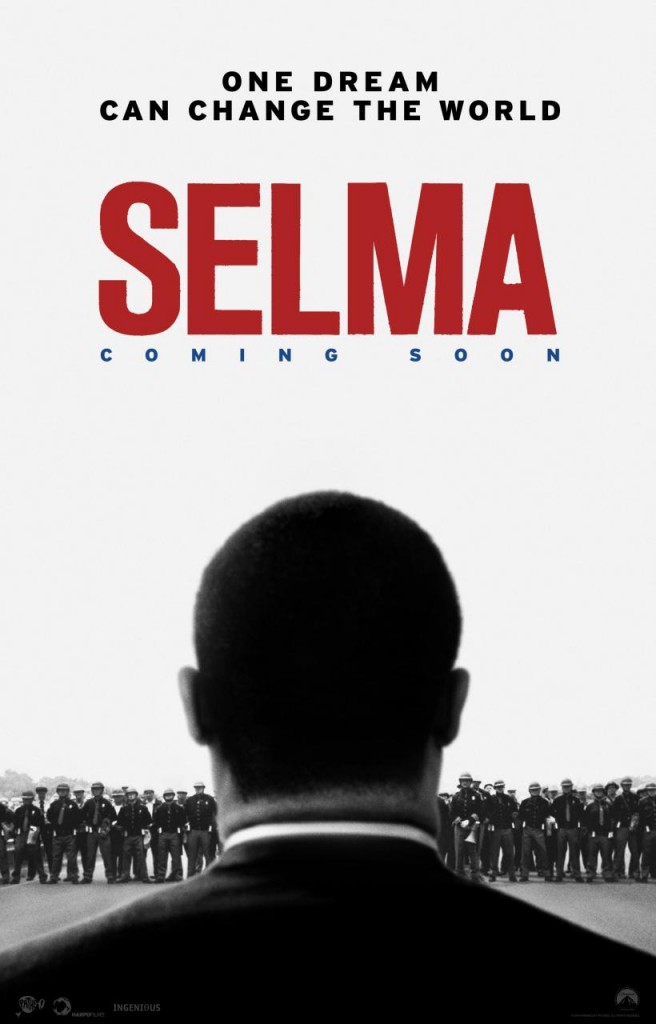Movie Breakdown: Selma (Noah)
People are doing traditional-style reviews all over the web, so we decided to try something different. In each “breakdown” we’ll take a look at what a film’s marketing led us to believe, how the movie actually played, and then what we learned from it all. Read on!
The Impression:
The first trailer I saw for Selma featured every cliche from every bio-pic/historical moment movie ever, but instead of soundtracking them with swelling strings (Angelina Jolie I’m looking at you and Unbroken), they put big, bassy rap-music. It confused me. Thus, I enter Selma more confused than anything else.
The Reality:
There is a moment early on in Selma, a quiet beautiful moment with children on the stairs of a church that almost gave me a heart attack. I can’t think of a modern Hollywood film about a famed historical figure, or a notorious/inspirational historical moment that has done that in recent memory, but Ava DuVernay’s touching, beautiful film does just that. Where historical films most often falter is in their one-sided, best-of representations of the characters or moments they’re trying to bring to screen. It isn’t a terrible strategy; we’ve devolved into a culture of headline readers so when looking back at our history, why not just highlight the moments your popcorn munching audience will be most “emotionally” connected to? This isn’t that film. Yes, DuVernay does hit on the big moments of Martin Luther King Jr. (here played by the fantastic David Oyelowo) and his presence in the shitstorm that was the march from Selma to Montgomery because they are important and they do drive the story, but she places them in the context of what was a very tense social and political moment both for the dissolution of segregation in the South and the forward progress of the Civil Rights Movement. DuVernay isn’t trying to force feed you the inspirational message of what the Selma March has become in retrospect, she’s trying to show you the intricate political machinations that MLKJr. had to manipulate, along with his small army of assistants and aides and family members, to even get the march moving. She wants to explore how we look back on history as Americans – in the glossiest most black and white of ways – and to debunk the idea that any of the characters involved in the march from Selma to Montgomery were perfect people. ‘Cause they weren’t. From MLKJr. to the impressively portrayed LBJ (Tom Wilkinson), these were human beings with an incredible amount of weight on their shoulders, all with different motivations, trying, to some degree to arrive at a similar goal. It takes your typical bio-pic and puts it out to pasture. This is bio-pic as an artistic capturing of a moment that’s come before and Ava DuVernay absolutely nails it. She doesn’t fall into the cookie cutter visual aesthetic or narrative structure we’ve come to expect from movies depicting our history. Instead she does what a good filmmaker should and takes the pieces of history she needs to construct the story and the themes she’s most interested in and places them in a visceral, moving film. If you’ve ever experienced a scene with so much energy, emotion and visceral power than DuVernay’s depiction of the assault by the State Troopers on the Edmund Pettus Bridge, you’re watching better films than I. It isn’t a perfect film – with some of the trappings of bio-pics coming to roost in the almost sappy ending – but it’s a great film, a ragged, true portrayal of the men and women who gave their time, their emotions, and their lives to trying to better this oft-times fucked up country.
The Lesson:
Pair this with Inherent Vice for a telling portrayal of America in the 60s and 70s.


